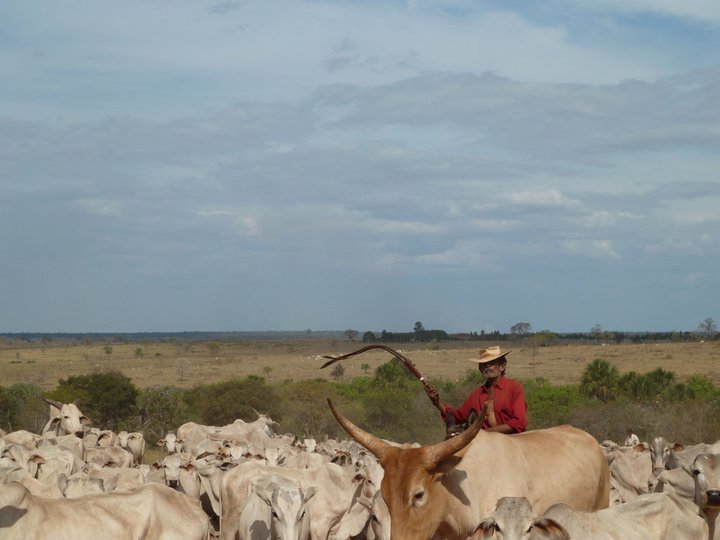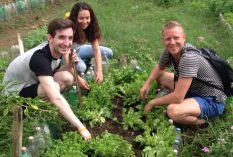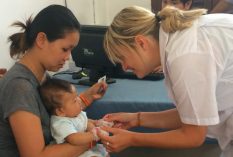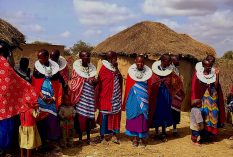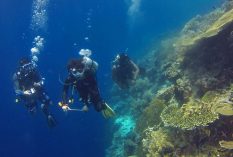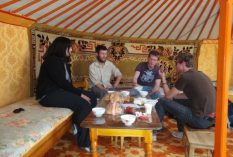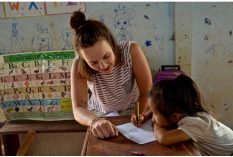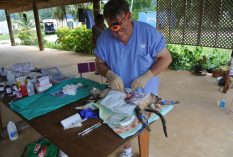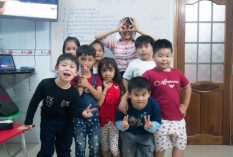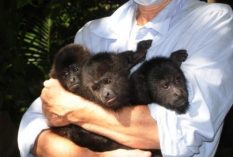“Volunteering at WCS Brazil does not solely mean doing fieldwork in the Pantanal and Cerrado regions. It’s much more than that: in fact, you not only get the chance to interact with wild animals, but with people, too. Both from our century and past ones. What happens when wildlife conservation, community outreach, and archaeology mix in the same melting pot? That’s what I experienced in the past days.
We have been driving our beloved pick-up truck for hours, all across Colorado. No, we did not get to the United States. Colorado is an immense fazenda in the municipality of Corguinho. The owner of the ranch allowed WCS to conduct some fieldwork there, i.e. setting cameras and cages. The area seems to be remote and -despite the ranch fences here and there- free from colonisation. But someone was there before us. Somebody was hiding in some of the caves around. While we stumbled upon a puma footprint, we spotted some other tracks around. Human ones. The caves were all covered by rock paintings. Beware: not graffiti, ancient paintings.
I have to admit I indulged imagining myself like a modern Indiana Jones, walking in the forest with my hiking shoes, the flashlight and a Swiss knife in my pocket. Then I remembered Indiana Jones is the nightmare of any good archaeologist and felt the urgent need to tell everyone not to touch anything. One of my colleagues explained me that some archaeologists already managed to do a preliminary survey of the area. The rock paintings depict different animals and human beings, and are mainly made with a red pigment. These features are typical of the Panalto tradition, and can be found in different regions of Brazil, like Paraná, Mato Grosso, Mato Grosso do Sul (where we are), Goiás, Sao Paulo, Minas Gerais, and Bahia. Unfortunately, the archaeologists couldn’t further study the site and gather more information on our ancestors from Corguinho.
Wildlife conservation work must go on, so we left the caves. Our minds were still wondering about these ancient civilisations as we got back on the pick-up truck. But another kind of civilisation was waiting for us. A much more recent one, whose members can still orally communicate with us. In fact, it was the community of Taboco.
On April 22nd the World celebrated the Earth Day. WCS couldn’t miss the opportunity to organise an event and engage the community in environmental issues. Advertising the Festival Amigos da Terra was filling all of our out-of-the-field time, being it at school or at the assentamento’s party. What is an assentamento? It’s a rural settlement resulting from a Brazilian agrarian reform process. It’s basically a governmental land property rights reassignment to underprivileged families.
After putting so much effort, it felt great realising that on the 24th everyone from Taboco was at the Festival. After a small marathon, we planted trees, and enjoyed a traditional Brazilian meal. While eating a tasty farofa, I met Maria and Pedro, two young kids curious to explore the world and craving to know more about my time at WCS. This is outreach, too. Work never ends, but it can be extremely pleasant. Later, the students from the local school performed a short play to promote sustainable farming. Even more, in the evening a group of students from Chatham University (Pittsburgh, US) arrived. They would join WCS for two weeks, and they contributed to the event with a soccer match Taboco vs. Chatham. The WCS crew is getting bigger, what will our next adventure be?”
Sources
Aguiar, R.L.S., & Lima, K.M. (2012) A arte rupestre em cavernas da região noroeste de Mato Grosso do Sul: discussões preliminares. Revista Espeleo-tema, 23(2), 117-125.
Paschoal, B., Werneck, C., & Guillot, J. Student Paper Series.

